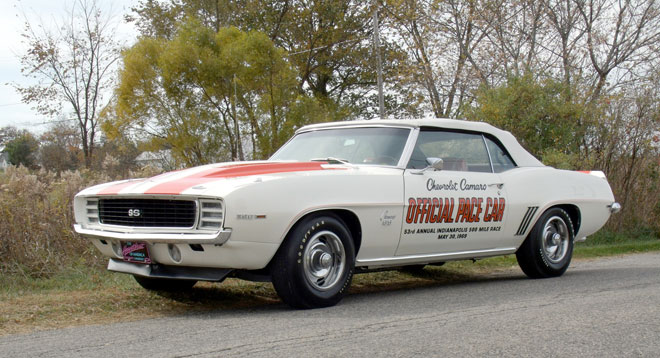This extremely rare 1969 Camaro is documented as one of only twelve Pace Car convertibles equipped with the rare L89 aluminum-head 396/375 horsepower engine. Its complete matching-numbers drivetrain that includes a 400 Turbo-Hydramatic and 3.07 rear axle ratio indicate that it is likely one of seven examples sent to the 1969 Indianapolis 500 for back-up pace car duty.
Now with 28,341 original miles, it has received a careful and thoroughly documented frame-off, nut-and-bolt rotisserie restoration that preserved as much originality as possible. All components, codes and VINs were photographed during the restoration for the car’s historical record, which includes the complete owner history, original trim tag, owner’s manual and showroom literature and certification by Camaro historian Jerry MacNeish.

